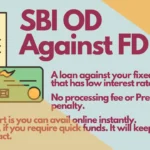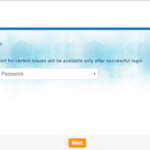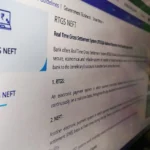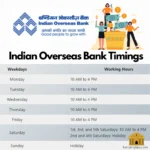What is a Savings bank account?

A savings bank account is an interest-bearing deposit account that can be opened by an individual with a bank or financial institution.
It is suitable for parking short-term money for daily use. Indian banks such as the State Bank of India, ICICI Bank, HDFC Bank Ltd and other PSU banks are offering the facility.
It is a convenient way of dealing with your money, as it would give you a modest rate of interest.
Let’s Have a Glimpse of SB Account
In countries such as India, the SB rates go between 2 and 5% per annum, which are paid monthly or quarterly to the account.
A savings bank account can be opened by any individual, irrespective of age. It’s reliable and safe, besides giving you a decent interest rate.
For parking short-term funds, the SB account is the best. It would meet all the requirements of normal transactions.
With your savings bank account, you would be able to pay daily household payments such as utility bills, grocery purchases, gas refills, etc.
The benefits that you get from having it are many. These include the facilities of ATM cards, internet banking, chequebooks, SMS alerts, phone banking, doorstep banking, etc., but all these facilities come with a cost.
ATMs have an annual maintenance charge that depends on the type of card, which again varies among the banks.
Along with its benefits, a savings bank account has its own limitations. As such, you can perform a limited number of transactions per month.
Not all SB accounts are the same. Only 4 to 5 monthly transactions can be done with the SBI Tiny account, which is basically a zero-balance account for the low-income group.
The maximum amount is capped at ₹2 to ₹5 lacs, which you can maintain for a year. Likewise, salary package accounts are loaded with benefits.
Normal savings bank account charges may include charges and fees such as ATM AMC, SMS charges, transaction charges, cash handling charges, cheque issuance charges, etc.
Knowing its pros and cons, one has to think before owning a Savings Bank account. As far as it is concerned, banks such as SBI, ICICI, and HDFC are offering good deals under this product.
Here, we have prepared a few points that will help you decide which bank to go with.
Choose the Bank

Choosing the right Bank would give you satisfaction later on.
There are a number of banks that are doing exceedingly well in the market, and choosing between these banks might be tricky too.
The brand name is one such thing that people normally consider when choosing. Deciding just by brand name would be a mistake. There are other factors that need to be considered too.
It might be worth considering the following factors when choosing a bank to open a savings bank account: These are
- Rate of interest.
- Monthly average balance or Quarterly average balance.
- Net banking facility.
- Availability of a chequebook, ATM card, SMS alert, and telebanking.
- Transaction limits.
- Various charges and AMCs are going to be levied on you.
Find out the Rate of Interest

You have got to know what the Bank is offering you. As you are going to keep your funds in this bank, it’s necessary to know well in advance what you’re going to get in return.
Savings bank account rates are different for different banks. The State Bank of India offers 2.7%. Likewise, ICICI and HDFC banks are offering a range of 3% to 3.5% per annum.
See the trend of interest rates banks offer and decide accordingly while choosing the best one.
Normally, a stable bank has low rates, while banks that need your deposit might give you higher SB rates. So, basically, you are safer if you go with banks that are stable.
Decide whether it’s a Single or Joint account

A savings bank account can be opened in ways that can be operated by multiple people, or you can just open it in your name.
Decide in which manner you would like to open an account. For instance, you might like to open a savings bank account along with your spouse or with your son/daughter, and whoever you think of, it can be arranged accordingly.
Account operation is another area that you would be required to consider.
In a single account, it’s, of course, only you. So you will be operating this account. In a joint account, you can choose the mode of operation.
You can mandate the following mode of operation in your joint account:
- Either or Survivor
- Former or Survivor.
- Jointly
- Specific mandate stating who will operate the account.
- By executing a power of attorney.
Keep Your KYC Documents Ready

To open an account at the bank, you may need a few documents to recheck.
These will serve identification purposes.
Make sure that your name, date of birth, and address are correct on your ID card.
Banks normally see the following documents to establish proper KYC for onboarding fresh customers: You may refer to the list
- Aadhaar card
- Voter Card
- Driver’s license
- Passport
In addition to PAN or Form 60/61, keep these documents ready so that, while processing your savings bank account, no issues arise.
Latest photograph
Keep ready your latest photograph, preferably 2/3 copies. While filling out the form, you have to paste it properly.
What Benefits are you Getting?

There are a number of services that banks usually provide at no cost. Try to learn as much as you can about those facilities.
Look for the following details before you finalize: Such as,
- Is an ATM card facility available, and what are its charges and AMC? What transaction limit are you going to get with your ATM?
- Is Internet banking available? Almost all banks give access to Internet banking at no cost. Know about the transaction limit you are getting. Various discounted rates are set for Internet banking users. By the way, do you know that transactions over the Internet are cheaper than doing them by visiting the bank?
- Know about the number of free cheque leaves you get per year. Beyond that, the bank normally charges you. Rates may be in the range of ₹3 to ₹10 per cheque leave.
- See for account keeping charges. A bank, such as the State Bank of India, does not charge account-keeping fees on a savings bank account. But you may find that a few other private banks may charge you additional service tax charges.
Accessibility

The Bank where you maintain your account should be easily accessible. This is a very important aspect to consider when choosing your favorite bank.
If your bank is not accessible during working hours, you will face lots of issues later on. There are certain banks where the penetration level is quite low.
These banks are available only in metropolitan areas. Whereas banks such as SBI, ICICI, and HDFC are people’s favorite banks, as these banks are found everywhere in the country.
Conclusion
Opening a bank account is quite easy but choosing the bank might be tricky. There are a number factors to consider when arriving to a particular bank.
The brand name, the interest rate that offers, the hidden charges and various AMCs and fees, are some of the factors that need to be considered while choosing the bank.
On top of these, the bank that you have chosen, must be accessible 24/7. The availability of online banking services and whether its user friendly and all sorts.
We have compiled as an indicative chart below. The list is just indicative data, as these figures keep changing from time to time. For that, please refer to the bank’s official website.
| Bank | Rate of interest | Net banking | Chequebook and ATM card | MAB (minimum average monthly balance) |
|---|---|---|---|---|
| State Bank of India | 2.7% | Yes | Yes | Nil |
| ICICI | 3 % | Yes | Yes | ₹ Nil/1000/2500/5000/10000 |
| HDFC | 3-3.50% | Yes | Yes | ₹ 2500/5000/10000/25000 |
| Kotak Mahindra Bank | 3.50% | Yes | Yes | ₹ 2000/5000/10000/20000 |
| Axis bank | 3-3.50% | Yes | Yes | ₹ Nil/10000/25000/100000 |
| RBL Bank | 4.25-6% | Yes | Yes | ₹ Nil/500/1000/2500 |
| IndusInd Bank | 4-5% | Yes | Yes | ₹ Nil/10000/25000/250000 |









I’m not sure why but this weblog is loading extremely slow for me. Is anyone else having this problem or is it a issue on my end? I’ll check back later on and see if the problem still exists.
Great post. I am facing a couple of these problems.